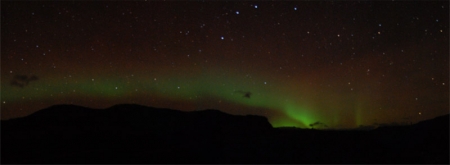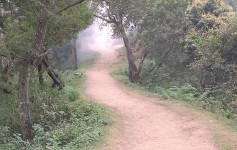When you head to Iceland in winter, which apparently no one does, you have to see the Northern Lights. It’s obligatory. But seeing them requires that you get as far away from cities as possible. And since there’s really only one city, it means getting away from Reykjavik. So we hopped in our tiny European rental car and drove east midway between Höfn and Jökulsárlón, or for all intents and purposes, between no one and nowhere. It was dark. Real dark. But that wasn’t good enough. Here’s what came out:
For the benefit of anyone who ever tries to photograph the aurora, here are my pieces of wisdom learned from this experience.
- You’d better have a damn sensitive sensor. If you can’t get up to at least ISO 64,000 you’re going to be in for a hard night.
- Ideally you want to shoot for a 15 second exposure. Any more and you’ll start getting star streaks. Make sure you have as wide as aperture as possible.
- It will be cold and you will likely have to wait for a while, maybe days. Be prepared.
- Cold temperatures will drain your batteries right quick. Keep them warm, perhaps wrapped in a hand warmer if you can.
- Don’t underestimate the wind. This photo had to be taken in the car with the window rolled down and even then the wind was still blowing us around. Thankfully the road we were parked off of wasn’t super busy at that late hour.
- It’s better if you can see any and all aurora. This means get somewhere you’ll have an open view of the entire sky. Trees, rocks, houses, etc. are fine because they create points of interest, but keep your sky clear. Notice how my aurora falls behind the mountains.
- The best shot will come as the aurora obtains three dimensionality, e.g. as it passes overhead. Mine looks flat because it’s in the distance.
I’ve come to believe that getting a really good Northern Lights shot is really hard to do, especially if you don’t live around the Arctic Circle. The wind, clouds, and lights themselves can be very fickle. You must carry the right equipment and know how to use it quickly. The cold and time will wear at you. If you’re interested, this photo was taken with a Nikon D40 with a 18-55mm kit lens, ISO 1600, 30s+ exposure, i.e. NOT the right tools for the job.



Leave a Reply